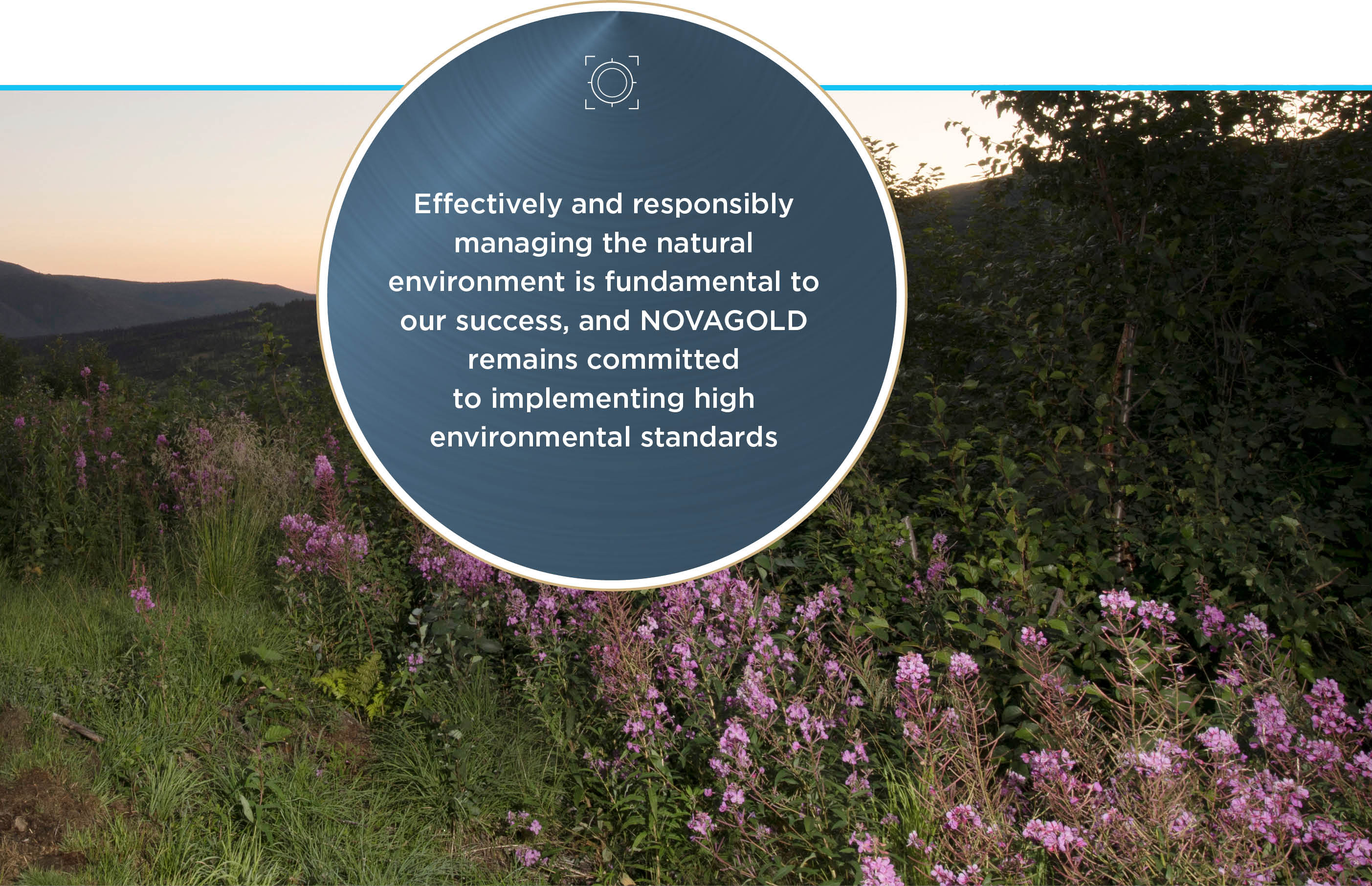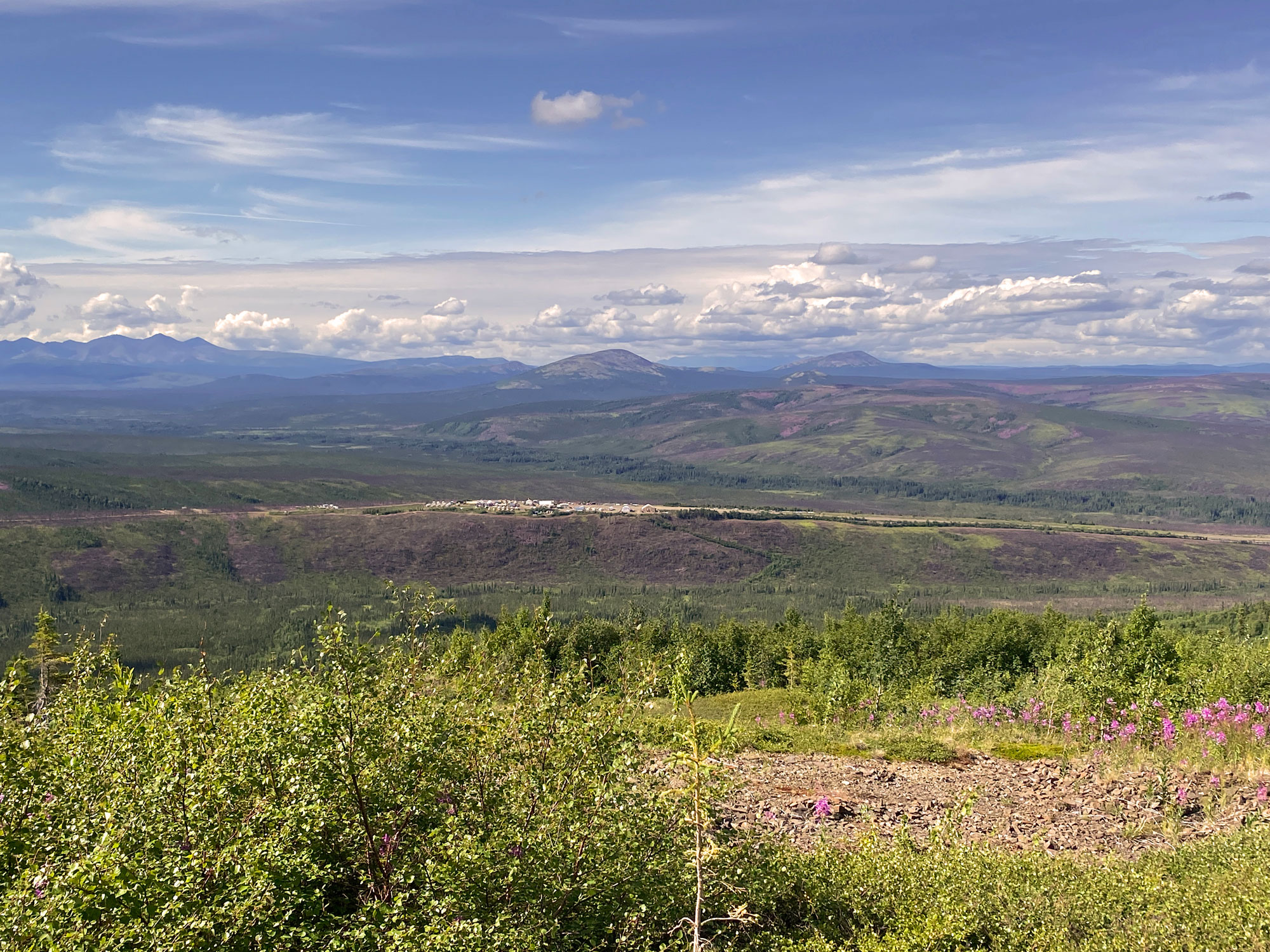Environment
“For more than two decades, Donlin Gold has been focused on protecting the environment around the project site. Environmental protection is integrated into every element of our work programs. Our site safety team, comprised of trained individuals from throughout the Y-K region, actively oversees and audits all field activities and ensures implementation of best management practices. I am very proud that again in 2023, Donlin Gold had no occurrences of non-compliance with permit requirements or incidents of damage to the surrounding environment.”
Ron Rimelman
Vice President, Environment, Health, Safety & Sustainability
NOVAGOLD’s Commitments to the Environment
NOVAGOLD places a significant emphasis on environmental management, considering it a top corporate priority. Our Board of Directors, employees, and the personnel of Donlin Gold LLC, are dedicated to minimizing and mitigating impacts to the environment for future generations while ensuring safe, responsible, and profitable operations for the benefit of employees, shareholders, and local communities. NOVAGOLD upholds and consistently monitors excellence in environmental performance across all office and project locations. Our comprehensive Environmental Policy outlines principles for all project stages, with a primary focus on the Donlin Gold project site in Alaska.
Specifically, NOVAGOLD’s environmental performance measurement centers around activities at the Donlin Gold project site, where detailed procedures guide environmental management across all operations, maintaining a robust environmental compliance track record. Stringent standards are adopted from the planning and environmental impact assessment process through drilling and other field work and environmental programs, and site rehabilitation, integrating the management of environmental, social, cultural, and economic aspects into strategic business planning and risk assessment processes. Recognizing stakeholders’ concerns about the environmental impact of Donlin Gold’s site activities, NOVAGOLD applies the precautionary principle to avoid or minimize potential impacts, and where not feasible, to mitigate and remediate our footprint. Effectively and responsibly managing the natural environment is fundamental to our success, and NOVAGOLD remains committed to implementing high environmental standards.
In 2022, Donlin Gold LLC implemented an Environmental Management System (EMS), integrating processes and tools to mitigate environmental impacts and ensure compliance with regulatory and permitting requirements. This initiative is led and overseen by NOVAGOLD’s VP of EHSS, who reports directly to NOVAGOLD’s President and CEO. In accordance with our permit obligations and the corporate policies of both NOVAGOLD and Donlin Gold LLC, the project site maintains a consistently high level of environmental performance. The environmental team conducts daily inspections of all ongoing activities at the site, diligently monitoring for potential releases to air, land, and water. These activities encompass various aspects such as water and wastewater management, air quality, hazardous and solid waste management, and fuel storage and usage (including associated spill risks), as well as the protection of biological resources in the vicinity of the site. However, as a non-producing mining company with limited operations, these effects are minimal. In addition, land disturbance is very limited at present, and impact footprints are small and fluctuate based on the amount of site activity planned for each season. Nevertheless, all relevant data is carefully managed through Donlin Gold’s EMS, which includes tracking and verifying the completion of any action items.
Components of the Environmental Management System (EMS)
- A centralized document repository, known as the Environmental Document Management System (EDMS), holds all relevant environmental documents (e.g., permits, agency communication, reports, and plans).
- Documentation of all Standard Operational Procedures (SOPs) which are regularly updated as needed.
- Experienced personnel from the environmental team ensure that the EMS is maintained, monitored, and managed accurately.
- Permit requirements and other environmental obligations and incidents are recorded, cataloged, scheduled, assigned, and tracked using Intelex, a proven environmental management software solution.
- Third-party audits are planned on a regular annual basis for assurance that environmental standards have been met. A third-party audit was conducted in 2022 and all recommendations were implemented. Another third-party audit, including EMS review, is planned for 2024.
Applicable Corporate Policies can be found at https://www.novagold.com/company/governance/


